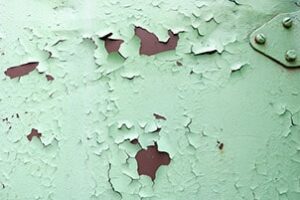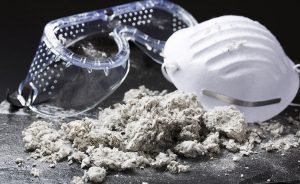
How To Choose Between Lead Paint Removal and Encapsulation
Lead paint is one of several materials that have been banned in the UK because of the danger they pose to the public…
Asbestos and cellulose are two types of insulation that have been widely used in buildings, but they couldn’t be more different. While one is a natural mineral fibre with serious health risks, the other is a safe, plant-based material often made from recycled paper. For homeowners and property managers, knowing the difference is crucial for safety and peace of mind.
Here at Abastra Environmental Ltd, we believe in arming you with the knowledge to protect your property and your health. If you’re unsure what type of insulation you have, this guide will help you understand the key distinctions and what steps to take next.
Asbestos insulation, particularly in its loose-fill form, was popular in the mid-20th century due to its excellent fire-retardant and insulating properties. It was commonly used in attics, wall cavities, and around pipes. The most common type of asbestos used for insulation was amphibole, a highly friable form that can be easily crumbled by hand. This makes it particularly dangerous, as the slightest disturbance can release microscopic fibres into the air.
These fibres can be inhaled and, over time, lead to serious respiratory diseases, including asbestosis, lung cancer, and mesothelioma. Asbestos insulation often has a granular or lumpy appearance, ranging in colour from grey to white, with visible specks of minerals. It may look like a loose, puffy material but is generally denser and more rigid than cellulose.
Cellulose insulation is a modern, eco-friendly alternative to traditional insulation types. It is typically made from recycled paper, cardboard, and other plant-based materials, which are treated with borate to make them fire-resistant.
Unlike asbestos, cellulose is completely safe to handle and install. It has a fluffy, soft texture and often has a greyish colour, similar to shredded newspaper. It is lightweight and can be easily compressed. Cellulose is highly effective at insulating and soundproofing and is a popular choice for both new constructions and insulation upgrades in older homes. The key difference in appearance is its fibrous, paper-like quality, which lacks the mineral-like or rocky appearance of asbestos.
The importance of distinguishing between these two materials cannot be overstated. Asbestos is a hazardous material that requires professional handling for removal and disposal. Disturbing it without proper precautions can release dangerous fibres into the air, posing a significant health risk to anyone in the vicinity.
Unknowingly treating asbestos insulation as if it were a harmless material like cellulose could have dire consequences. Knowing what you’re dealing with is the first step in ensuring your family’s safety and complying with health and safety regulations. If you have any reason to suspect the presence of asbestos, the most important action you can take is to avoid disturbing it.
While visual inspection can offer clues, it is not a definitive method for identification. Here are some of the visual characteristics to look out for:
Asbestos Insulation tends to be a lumpy or granular, loose-fill material. It may contain mineral flecks and can range in colour from grey-white to a brownish tint. It has a distinct, coarse texture. You might also find it packed in large paper bags or as a dense, compacted layer in an attic or wall cavity.
Cellulose Insulation looks like shredded newspaper or recycled paper. It has a soft, fluffy texture and is typically a dull grey or off-white colour. It often has visible paper particles or print. It is lightweight and loose, easily moving when disturbed.
Remember, a visual inspection is only a first step. The only way to be 100% certain is to have a sample tested by a professional. This is where our expertise comes in. Abastra Environmental Ltd offers professional asbestos surveys to accurately identify the presence of asbestos-containing materials (ACMs) in your property. Our trained and certified surveyors will safely take samples and have them analysed in a UKAS-accredited laboratory.
When it comes to the safety of your home or commercial building, guessing is not an option. Although asbestos insulation may look somewhat similar to cellulose, the health risks associated with asbestos are too great to ignore. If you have any doubts about the insulation in your property, it’s always best to assume the worst and seek professional advice.
Our team at Abastra Environmental Ltd provides safe and effective asbestos removal services, ensuring any hazardous materials are handled and disposed of according to strict regulations. We are dedicated to making properties in London, Essex, and the South East safe for everyone.
If you’re concerned about your insulation, don’t take a risk. Call Abastra Environmental Ltd today to arrange a professional asbestos survey and get the definitive answer you need for your peace of mind.

Lead paint is one of several materials that have been banned in the UK because of the danger they pose to the public…

Many buildings in the UK built prior to 2000 still contain asbestos-based materials. Since it’s not always possible to tell by looking (with asbestos resembling

Although banned in the UK since 2000, asbestos was a common building material well into the 1980s, meaning many properties are likely to have some
| Cookie | Duration | Description |
|---|---|---|
| cookielawinfo-checkbox-analytics | 11 months | This cookie is set by GDPR Cookie Consent plugin. The cookie is used to store the user consent for the cookies in the category "Analytics". |
| cookielawinfo-checkbox-functional | 11 months | The cookie is set by GDPR cookie consent to record the user consent for the cookies in the category "Functional". |
| cookielawinfo-checkbox-necessary | 11 months | This cookie is set by GDPR Cookie Consent plugin. The cookies is used to store the user consent for the cookies in the category "Necessary". |
| cookielawinfo-checkbox-others | 11 months | This cookie is set by GDPR Cookie Consent plugin. The cookie is used to store the user consent for the cookies in the category "Other. |
| cookielawinfo-checkbox-performance | 11 months | This cookie is set by GDPR Cookie Consent plugin. The cookie is used to store the user consent for the cookies in the category "Performance". |
| viewed_cookie_policy | 11 months | The cookie is set by the GDPR Cookie Consent plugin and is used to store whether or not user has consented to the use of cookies. It does not store any personal data. |